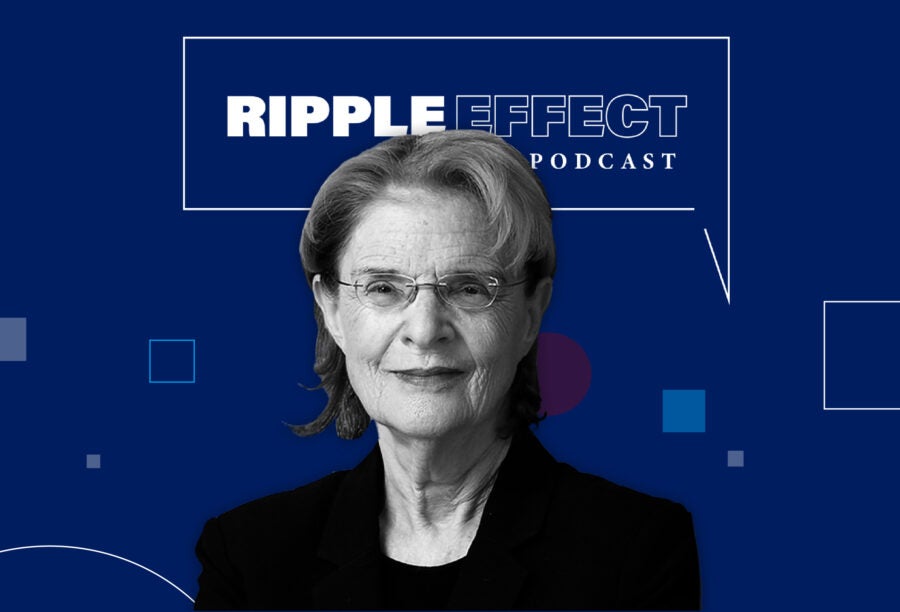Wharton real estate professor Susan Wachter talks about rising housing prices and affordability issues, and what can help bring the housing market back into alignment in the next few years. This episode is part of a series on “Real Estate.”
Transcript
How the Housing Market Affects Inflation
Dan Loney: It’s a pleasure to be joined in studio by Susan Wachter, professor of real estate at the Wharton School. Susan, one of the bigger questions right now in terms of the economy is just how much housing is a factor in inflation. What do you think?
Susan Wachter: Housing right now is a major contributor, but it isn't the only contributor. So, we can't depend on housing and rent prices taking us out of this inflation surge.
Loney: Is the expectation that lower pricing would see some sort of relief?
Wachter: Yes, because rent is 40% of the CPI (consumer price index). And it particularly affects owner-occupied housing as part of the CPI index. It has been a significant part of the CPI increase. But recently, it's outside of the housing sector that we see a real acceleration of inflation, even with a decline in rents. And we do see a decline in rents. In fact, in most markets, rents are flat to declining with the exception of the Midwest. We can come back to that.
There is some relief to come in the CPI and the PCE (personal consumption expenditures). Less so PCE, because CPI has more housing in it. Some relief to come. But that will not take us down to the 2% desired inflation, because we actually see the super-core CPI increasing in the last three months at a rate north of 7% percent. And that's leaving housing out.
Loney: Why is the Midwest not seeing as much decline in rent?
Wachter: In the Midwest, we see a 5% growth in market rents, and that's because it's affordable. What's happening right now is that the markets that saw the biggest run ups in the South — Florida, Texas — are now not affordable anymore. We're seeing declines in those markets. There's also a surge in supply in those markets, in part a response to the increase in demand, which drove prices up. That surge in supply is also holding rents down.
We will see some relief in the South but not the Midwest. Overall prices are rising at a significant rate, which feeds into inflation, which feeds into interest rates, which feeds into mortgage rates. In this conundrum that the Fed is struggling with right now, the higher the mortgage rates, the more likely that supply and housing will be constrained as homeowners are locked in. They're not giving up their 3% mortgages for a 7% mortgage, which the Fed’s interest rate translates into.
Loney: The types of rates we saw a couple of years ago, when we had a run on refinancing where mortgage rates were down to 3%, that's not coming back.
Wachter: We're not going to see 3%. And 0%, near 0%, that's in our past. What we're hoping for is, as inflation comes under control, we can get closer to the historical average of mortgage rates, which is 5%. Even at 5%, we'll see people holding on to that 3% mortgage. Ultimately, what's keeping rents up, despite the decline in demand, is lack of supply coming from two sources. Lack of supply from inventory — people are locked into their homes because of low mortgage rates. Also, it's costly to produce new supply.
Interestingly enough, we also have another headwind, which is that the rental supply, which increased, is now decreasing. There's a glut in the market, which is why we're seeing rents decrease in some markets. That should get inflation under control for a time, because that glut will be absorbed. Once that's absorbed, then we will see housing prices rise again, rents rise again.
There's kind of a window for the Fed action to get us closer to normal mortgage rates and interest rates, and bring us back to normalcy. That's to about the end of 2025, when we'll start seeing rents rise again because this glut will be absorbed.
Loney: One of the components that I watch is Case-Shiller Home Price Index. The most recent numbers show that San Diego has been one of those cities that has seen a lot of year-over-year increase. Chicago and Detroit were two of the cities noted as seeing the highest year-over-year increase. I don't remember those two particular cities in this mix at that high a level. It's not just the rental prices, it seems, but it's also the housing prices in that region.
Wachter: Right. It’s a search for affordability with a job market, and Chicago qualifies. It's affordable. The Midwest is affordable. The South, which has historically been, is less affordable.
Loney: Will we see another bump up of housing prices before we see things slow down? We saw such a rush in 2021 and 2022, where prices went up and then things leveled off a little bit. It feels like maybe we're getting ready for another bump up.
Wachter: It all depends on the overall economy. We see in the most recent numbers that the overall economy is slowing. Also, it depends on affordability. We now are at affordability constraints for many households. They can't afford the housing, so they can't demand the housing.
I think that the consensus for this coming year is that housing prices will increase. But perhaps at about the inflation rate, assuming that GNP is declining in growth rate, as we've seen in the most recent quarter. If we don't see that deceleration in the GNP growth rate, it will absolutely heat up the housing market, despite the high mortgage rates. Because with employment, there is a need to move to new housing. Maybe it's in the Midwest. We still have peak millennials. They’re still looking to come out of their family’s home. We have 50% percent of young adults— it’s back at record Great Depression levels in recent research that we did. Fifty percent of young adults are living at home, and they and their parents are looking for them to go out independently, which will increase the demand, put more pressure. We have a supply shortage. We have pent up demand.
How Better Policies Can Improve the Housing Supply Shortage
Loney: From a policy perspective, do you have to start to look at some of these issues where policy may be able to help the process along?
Wachter: Yeah. I think there is a new look at the importance of policy, particularly at state levels. States across the country are experimenting with ways to ease up the supply of developable land.
Loney: They have to work directly with the builders and the local communities to be able to open some of these doors, right?
Wachter: That's the way forward.
Loney: What's your expectation for the problems that we're having right now with the housing market? What do we need over the next couple of years to bring the housing market back into alignment?
Wachter: First, it really is mortgage rates. And mortgage rates aren't going to come down until inflation and the overall interest rate comes down. Because otherwise rental is more affordable, but rental isn't that affordable either. In fact, we see it in the percentage of young adults, millennials, who are renting versus owning, if you look at homeownership per individual, as opposed to the overall, we see one-third of young adults not living in owner occupied. They’re either living with their parents or renting, which is significantly lower than previous generations.
What's the answer? The answer is first and foremost getting the mortgage rate down so that people can become owners. That is going to ease up the pressure on the rental market as well. That's one of the contributors to high rents, is those who are priced out of the owner occupancy market and only can be in the rental market. The second is a longer rent societal issue, which is increasing the supply and the potential to supply housing, whether it's rental or owner occupied, especially starter homes.
Loney: One of the things that has been priced out of the housing market are newer homes in that $200,000 to $300,000 category. It seems like every time you see a development going up of new homes, you're talking about $400,000 to $500,000. That’s obviously a challenge for a lot of people, and it sure is going to be a challenge with younger generations.
Wachter: There have been trillions of dollars of wealth created for those who already own their home. But for those who are looking to buy or rent, coming up with tens of thousands of dollars is no easy task. So yes, starter homes. Builders are, in fact, moving in this direction. Homes are getting smaller. But it's less profitable to produce on the starter home than the luxury market overall. And there needs to be that ability to increase the supply of land that is developable near infrastructure, near jobs, in communities and in states that are willing to go in this direction.
Loney: I think the expectation is even if interest rates do come down, they're going to come down marginally, not anything significant. If you're out there buying a home, don't you almost have to ride the wave a little bit? Maybe going in with a mortgage at 6.75% and then refinance.
And isn’t this a different kind of wave than we had a couple of years ago?
Wachter: That’s the hope for those who are buying with mortgages today -- that refi is in their future at 6%, down from 7 percent. That helps out a lot. But the major buyers today are buying, many without a mortgage. Because again, 7% is daunting.
The relief, unfortunately, would come with the slowing of the economy. And the slowing of the economy is a double-edged sword. On the one hand, rents will ease up, owner-occupied housing prices will ease up, but incomes will decline as well. So, that isn't a good solution for affordability.
Loney: It also seems like that the the push to build multifamily properties, which has been so strong in the last decade or so, is continuing. That's where builders believe their bread and butter is going to be, at least for the foreseeable future.
Wachter: And there is a need. Again, peak millennials. But the glut in the market right now is going to slow supply for the next year or so.



